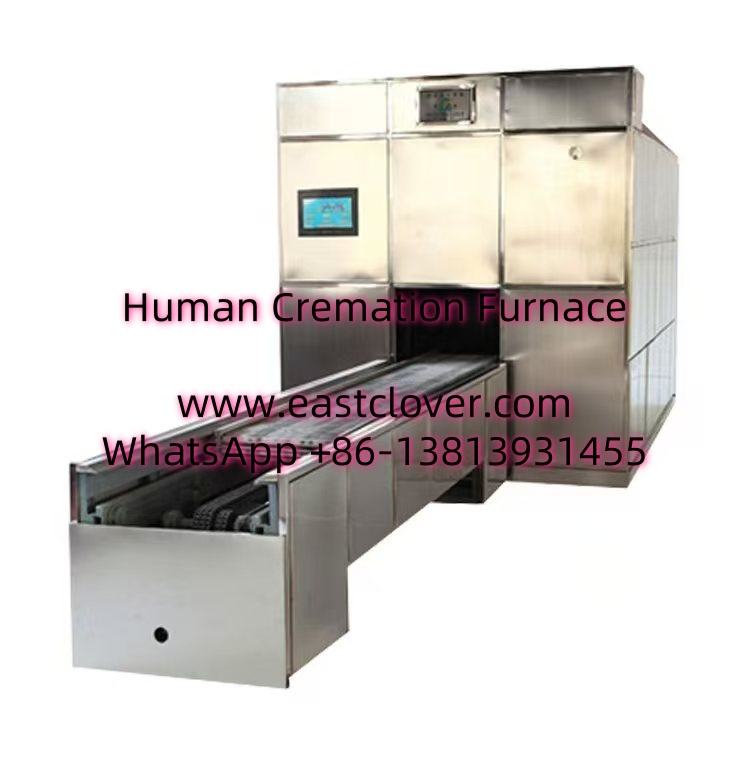Introduction
A professional cremation furnace is a specialized apparatus designed to perform cremation, the process of reducing human or animal remains to bone fragments through high-temperature combustion. For decades, cremation has been a widely accepted method of final disposition, particularly in regions with limited burial space or cultural preferences for cremation. However, traditional cremation technologies have faced scrutiny due to concerns over energy consumption, emissions, and environmental impact. In response, the industry has seen significant advancements aimed at enhancing efficiency, reducing ecological footprints, and improving operational safety. This news explores the evolution of cremation furnace technology, focusing on innovations that prioritize sustainability and performance.
Traditional Cremation Furnace Design
Conventional cremation furnaces operate using fossil fuels such as natural gas or propane to generate temperatures between 1,400°F and 1,800°F (760°C–982°C). These systems rely on primary and secondary combustion chambers: the primary chamber incinerates the body, while the secondary chamber burns off excess gases and particulate matter. While effective for reducing organic matter, older models often lacked advanced filtration systems, leading to the release of pollutants like carbon monoxide, mercury (from dental amalgams), and dioxins. Additionally, inefficient heat retention and manual operation contributed to high energy consumption and operator dependency.
Innovations in Cremation Furnace Technology
Energy Efficiency Improvements
Modern cremation furnaces integrate energy-efficient features to minimize fuel consumption and operational costs:
- Advanced Insulation Materials: Refractory ceramics and fiber-reinforced linings improve heat retention, reducing the energy required to maintain high temperatures.
- Dual-Stage Combustion Systems: Enhanced airflow control and staged combustion optimize fuel usage, ensuring complete combustion with less waste.
- Heat Recovery Systems: Waste heat is captured and repurposed to preheat incoming air or water, improving overall thermal efficiency by up to 30%.
Emission Control Technologies
To address environmental concerns, manufacturers have developed sophisticated emissions management systems:
- Scrubbers and Filters: Multi-stage filtration systems, including dry scrubbers and HEPA filters, trap particulate matter and heavy metals before release.
- Catalytic Converters: These devices break down harmful gases like nitrogen oxides and dioxins into less toxic compounds.
- Mercury Capture Systems: Activated carbon filters and amalgam separators specifically target mercury emissions from dental fillings.
Automation and Digital Integration
Smart technologies are revolutionizing cremation operations:
- IoT-Enabled Monitoring: Sensors track temperature, pressure, and emissions in real-time, allowing operators to adjust settings remotely.
- Predictive Maintenance: AI algorithms analyze equipment performance data to predict failures and schedule maintenance, reducing downtime.
- Automated Loading Systems: Robotic arms and conveyor systems minimize human interaction with the furnace, enhancing safety and consistency.
Sustainable Materials and Practices
Innovations extend beyond the furnace itself to include eco-friendly practices:
- Biodegradable Caskets: Use of plant-based materials like bamboo, willow, or recycled cardboard reduces the carbon footprint of cremation containers.
- Renewable Energy Integration: Solar or electric-powered furnaces are emerging as alternatives to gas-powered models in regions with green energy infrastructure.
- Water-Cremation (Alkaline Hydrolysis): Though not a furnace-based method, this alternative uses water and alkali to dissolve remains, consuming 90% less energy than flame-based cremation.
www.southclover.com
The cremation industry is undergoing a transformative shift driven by technological innovation and environmental stewardship. From energy-efficient designs and advanced emission controls to AI-driven automation and sustainable practices, modern cremation furnaces are setting new benchmarks for efficiency and ecological responsibility. These advancements not only address regulatory demands and public concerns but also align with global sustainability goals. As technology continues to evolve, the focus will remain on minimizing environmental impact while maintaining the dignity and safety of the cremation process.
FAQs
How do modern cremation furnaces reduce environmental impact?
They incorporate scrubbers, catalytic converters, and mercury capture systems to filter pollutants, alongside energy-efficient designs that lower fuel consumption.
Is electric cremation more sustainable than gas-powered models?
Electric furnaces can be greener if powered by renewable energy sources, but their sustainability depends on the local energy grid’s carbon footprint.
What is alkaline hydrolysis?
Also known as water cremation, it uses a solution of water and potassium hydroxide to break down remains, offering a low-energy, low-emission alternative to traditional cremation.
Are automated cremation systems safe?
Yes. Automated loading and monitoring reduce human error and exposure to high temperatures, enhancing safety for operators.
Can cremation furnaces handle medical implants or prosthetics?
Modern systems include post-processing steps to safely recover metals from implants, which are then recycled or disposed of according to regulations.

Comments are closed